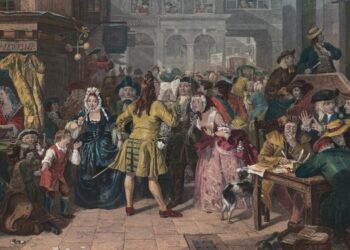Gustave Le Bon’s “The Psychology of the Masses” is a classic work in the field of social psychology, first published in 1895. In this book, Le Bon explores the psychological characteristics of crowds and the ways in which they can influence individual behavior and societal change. He also discusses the role of leadership in shaping the actions of crowds and the potential for both positive and negative outcomes of crowd behavior.
Background on the Author: Gustave Le Bon was a French sociologist and political scientist who was born in Nogent-le-Rotrou, France in 1841. He received a medical degree from the University of Paris and later studied psychology and sociology at the Sorbonne. In addition to his work on crowd psychology, Le Bon was also interested in the fields of anthropology, criminology, and history. He was a prolific writer and published numerous books and articles on a variety of subjects. Le Bon died in Paris in 1931.
- The Nature of the Crowd: In the first chapter of “The Psychology of the Masses,” Le Bon begins by discussing the nature of crowds and the ways in which they differ from individual behavior. He argues that when individuals come together in a crowd, they lose their sense of individual responsibility and become more susceptible to suggestion and manipulation. The author also states that crowds tend to exhibit primitive instincts and behaviors, such as violence and mob mentality.
- The Psychology of the Individual versus the Crowd: In the second chapter of the book, the reader can learn about the differences in psychological characteristics between individuals and crowds. The author states that individuals are generally more rational and logical in their thinking, whereas crowds are more emotional and irrational. Le Bon also points out that individuals tend to be more resistant to suggestion and manipulation, whereas crowds are more susceptible.
- The Influence of the Crowd on Society: In this chapter, Le Bon explores the ways in which crowds can influence society and social movements. He notes that crowds can be a powerful force for social change, but also warns of the dangers of mob mentality and the potential for negative outcomes. Le Bon also looks at the role of leadership in shaping the behavior and actions of crowds.
- The Psychological Characteristics of Crowds: Le Bon delves deeper into the psychological characteristics of crowds in this chapter. He discusses the loss of individual responsibility and the decrease in intelligence that occurs when individuals come together in a crowd. The author also notes the increase in suggestibility and the emergence of primitive instincts, such as violence and mob mentality.
- The Role of Leadership in Crowds: In this part of the book, Le Bon focuses on the role of leadership in shaping the behavior and actions of crowds. The author enlarges on the different types of leaders that are most effective in manipulating crowds and the dangers of unchecked leadership. Le Bon further explains the importance of understanding the psychological dynamics of crowds in order to effectively lead them.
- The Impact of Crowds on Social Movements and Revolutions: The author discusses the role of crowds in inciting social change and the potential for both positive and negative outcomes of crowd behavior. He shows the dangers of mob mentality in revolution and the importance of considering the long-term consequences of crowd action.
- Conclusion: In the final chapter of “The Psychology of the Masses,” Le Bon summarizes the key points of his book and reflects on the enduring influence of crowd psychology. He emphasizes the importance of understanding the psychological dynamics of crowds in modern society and the potential for both positive and negative outcomes of crowd behavior.
Upon its publication, “The Psychology of the Masses” received mixed reviews from critics. Some praised Le Bon’s insights into the psychological characteristics of crowds and the role of leadership in shaping their behavior, while others criticized his lack of empirical evidence and overly deterministic view of crowd psychology. Despite these criticisms, the book has continued to be widely read and studied in the field of social psychology, and is considered a foundational work in the study of crowd behavior.
Le Bon’s theories on crowd psychology have been influential in shaping our understanding of the ways in which groups can influence individual behavior and societal change. His ideas have been applied to a variety of contexts, including political revolutions, social movements, and even marketing and advertising strategies. Many of Le Bon’s insights, such as the loss of individual responsibility in crowds and the influence of leadership on crowd behavior, have been supported by subsequent research and continue to be relevant today.
“The Psychology of the Masses” has had a lasting impact on the field of social psychology and has contributed significantly to our understanding of group dynamics.










